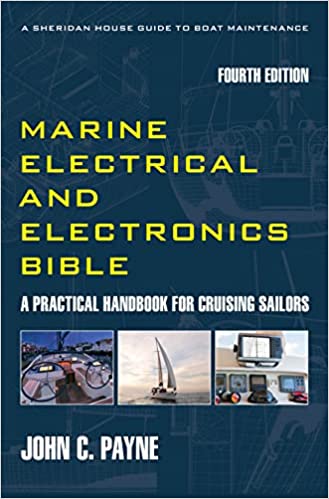Aluminum Fishing Boats
Aluminum fishing boats are the most common types of fishing boats in use around the world. In Australia they call them tinnies, and they are the worlds work horse for fishing and leisure boating. There are many good reasons why aluminum is used for fishing boats, and they will be outlined below.
Aluminum boats are widely valued for their durability, light weight, and low maintenance, making them a popular choice for recreational, commercial, and military use. Constructed from marine-grade aluminum alloys, these boats resist corrosion, especially in freshwater environments, and are less prone to damage from impacts compared to fiberglass or wood hulls. Their lighter weight improves fuel efficiency and makes trailering easier, which is especially beneficial for small to mid-sized vessels.
The Marine Electrical Electronics Bible is now out, buy and save money, make your boat more reliable and be self sufficient.Aluminum boats come in various forms—from simple jon boats and skiffs to high-performance fishing boats, patrol craft, and landing barges. Welded aluminum hulls are preferred for their strength and watertight integrity, while riveted models are lighter and more affordable but may require more maintenance over time.
One of the key advantages of aluminum is its longevity. With proper care, these boats can last decades. They’re also highly customizable, allowing owners to modify layouts, add accessories, or retrofit systems with relative ease. However, aluminum can be noisy on the water and may require sound-dampening measures. In saltwater, galvanic corrosion is a concern, so protective coatings and sacrificial anodes are essential.
Aluminum Fishing Boats
There are many advantages in purchasing an aluminum fishing boats. The first major advantage is they way less expensive than a fiberglass boat. They are also significantly lighter. They are way easier to handle on and off a trailer and additionally they are much easier to tow behind your vehicle. Another important factor is they require much less power, which means smaller outboard motor and also use less fuel. Another great advantage of an aluminum fishing boats is they are more robust in that they are able to sustain damage, all those impacts when getting on and off trailers, or nudging rocks and so on. Sure they don't look as great and shiny as those beautiful fiberglass boats. However the range of aluminum fishing boats on offer is substantial, there is literally a boat for every use, with boat manufacturers having a boat type, size and setup that will suit any requirement, from inshore to offshore.
Aluminum Fishing Boat Hull Forms
Aluminum boats feature a wide range of hull forms, each tailored to specific performance needs, water conditions, and operational priorities. Here’s a breakdown of the most common hull types used in aluminum boat design, along with their key characteristics and use cases:
Flat-Bottom Hull
Best for: Calm, shallow waters like rivers and lakes
Pros: Excellent stability at rest, easy to beach, simple construction
Cons: Poor handling in rough water, limited speed and efficiency
V-Hull (Deep-V and Modified-V)
Best for: Choppy or offshore conditions
Pros: Slices through waves for smoother ride, better tracking and speed
Cons: Less initial stability, deeper draft than flat-bottom
Semi-V Hull
Best for: Versatile use in mixed conditions
Pros: Balance between speed, stability, and comfort
Cons: Compromises some rough-water performance
Pontoon Hull
Best for: Leisure cruising and stable platforms
Pros: High stability, spacious deck area
Cons: Limited speed and maneuverability
Catamaran (Twin Hull)
Best for: High-speed, stable performance in rough water
Pros: Excellent stability, reduced drag, efficient fuel use
Cons: Complex construction, higher cost
Tunnel Hull
Best for: Shallow water and high-speed applications
Pros: Lift and speed with shallow draft
Cons: Less efficient in deep or rough water
Displacement Hull
Best for: Heavy-duty workboats and slow cruising
Pros: High load capacity, stable at low speeds
Cons: Not designed for planing or speed
Aluminum Fishing Boats
The best part about aluminum fishing boats is you can get yourself a very cheap second hand or new boat of 12 feet, called a car topper that weighs less than 200 lbs (100 kg) and doesn’t need a boat trailer. Two people can lift these boats and slide them on a set of vehicle roof racks. You can use a simple set of oars or a small outboard motor. This gives you access to the most remote of lakes and rivers, and they are often used by duck hunters and other off the grid activities.
Aluminum Fishing Boats
As I have stated you can buy an aluminum fishing boats in a type and size to suit your particular angling goals. Given they have a very rugged and resilient construction and that makes them suited from the shallow waters of estuarine and river fishing
They are well suited to being used in dams and reservoirs where there is a high probability for accidental striking of tree stumps, shoreline rocks and other obstructions. Where a fiberglass hull gelcoat is easily dinged and damaged, aluminum fishing boats can sustain scratches and creases and dents without a costly repair bill.
Aluminum Fishing Boats
One of the most common aluminum fishing boats in the US are Jon boats, which have a flat bottom and allow you to literally get up on the plane and skim across very shallow water areas. For those who want to fish in larger bodies of water, such as bays and offshore waters then Mod-V and Deep-V aluminum fishing boats are very successful. They come in a wide variety of configurations that include center console arrangements. Some come as bare aluminum finish and others painted, it all depends on your budget.
Overall, aluminum boats offer a rugged, practical solution for boaters who prioritize function, efficiency, and resilience. Their popularity continues to grow in both inland and coastal applications, especially among anglers, workboat operators, and adventurers seeking reliable performance in demanding conditions.
More great advice and fishing tips. More about fishing boats.
